#duke and Duchess of Ferrara
Explore tagged Tumblr posts
Text
So, erm, I finished reading The Marriage Portrait by Maggie O’Farrell. Erm. Oh my goodness. Five stars. Possibly my favourite book of this year so far. I think I’m really gonna need a minute to let this settle oh my goodness. Historical fiction isn’t usually my go to but this really really just… I don’t even have the words it was just beautiful. This was my introduction to Maggie O’Farrell and I definitely see myself reading more of her work. Erm. Wow. Highly recommended
#the marriage portrait#Lucrezia de Medici#lucrezia d’Este#Alfonso d’Este#Alfonso II d’Este#duke and Duchess of Ferrara#my last duchess#maggie o'farrell#robert browning
4 notes
·
View notes
Text
Book Review - ‘The Marriage Portrait’ by Maggie O’Farrell
Frankly I couldn’t fault this book. It was engaging to read, and the characters came across as real people which is really important when writing historical fiction. Don’t confuse Lucrezia d’Medici with Lucrezia Borgia, though the two are related – Lucrezia d’Medici (the subject of this novel) was married to the grandson of Lucrezia Borgia (Alfonso d’Este). It’s strange to think that while this…

View On WordPress
#16th Century#Alfonso Duke of Ferrara#Book#Book Review#Ferrara#Fiction#Florence#Italy#Lucrezia D&039;Medici#Lucrezia de Medici#Lucrezia Duchess of Ferrara#Maggie O&039;Farrell#Marriage Portrait#Novel#Renaissance#Renaissance Italy#Review#The Marriage Portrait
0 notes
Text

Two or three of her ladies-in-waiting were pretty. One danced well and another, Lucrezia’s cousin Angela Borgia, was charming. Without her knowing, El Prete had picked her as his favorite. Angela’s charm would be the source of great tragedy in Ferrara; even then it must have been one of the reasons for the nightly visits Alfonso’s brothers made to Lucrezia’s palace.
She was the illegitimate daughter of Guillem Ramon de Borja and Sanoguera, son of Otic de Borja y Montcada and his wife Violant Sanoguera. Her mother was Isabel de Montcada. She was also a niece of Cardinal Rodrigo Borgia, later Pope Alexander VI .In her youth she lived in Rome alongside her cousin Lucretia Borgia, whom she accompanied to Ferrara when she married Alfonso I d'Este, Duke of Ferrara
Considered as a woman of great beauty, elegance, romantic, with an exquisitely feminine personality. She was absolutely trustworthy friend, confidant of the innermost secrets, favorite companion and assistant to her favorite cousin Lucretia. She won the praise of men of letters as Diomede Guidalotti who dedicated two sonnets to her, and even Ludovico Ariosto dedicated the last canto of Orlando Furioso to her. Pietro Bembo idealized her as an "angel that can pray for me." On 1 August 1504, in the dedication of his "Gli asolani" to the duchess Lucrezia Borgia refers back to his Angela, indicating that Lucrezia's cousin and maiden is "the dear and gallant Madonna Angela Borgia".
#perioddramaedit#history#angela borgia#angela borja#borgia#cortegiania#lucrezia borgia#the borgias#lily james#donne della storia#donne nella storia#donneitaliane#donne italiane#women of history#renaissance women#italian renaissance#women of renaissance#renaissance italy#renaissance#rinascimento#lilyjamesedit#otoc de borja#cesare borgia#rodrigo borgia#isabel de montcada#giulio d'este#ippolito d'este#ferrara#women in history#pietro bembo
80 notes
·
View notes
Text
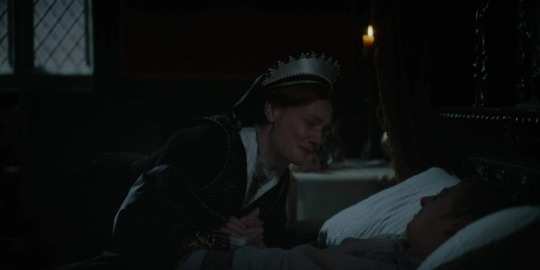
Mary I's Fight For The Throne
10th February 1553 - Mary and King Edward meet
On the 10th February 1553 Mary rides from her townhouse of Saint John's in Clerkenwell down Fleet Street to see her brother King Edward VI in Westminster. She had arrived in London on the 6th, but that night Edward was "attacked by a fever caused by a chill he had caught". 1 Her visit was therefore delayed three days to allow him time to recover.
She is accompanied to court by "a great number of lords and knights", the "duchess of Suffolk and Northumberland [...] and many more ladies and gentlewomen." 2 She is met at the outer gate by John Dudley, the Duke of Northumberland, Henry Grey, the Duke of Suffolk, and many more earls, knights and gentlemen, who do "duty and obeisance to her as if she had been Queen of England." 3
After dismounting, she is led up into the chamber of presence, and into the King's bedchamber, where the King "met her and saluted her." 4 Edward "received her very kindly and graciously, and entertained her with small talk, making no mention of matters of religion." 5
After talking, she leaves "accompanied by several gentlemen and ladies, and notably by the Duchesses of Suffolk and Northumberland." 6
While in London, she meets the Imperial ambassador, Jehan Scheyfve, who informs her of a rumour about the Privy Council betrothing her to Alfonso d'Este, eldest son of the Duke of Ferrara. Mary shows "great astonishment and declared it seemed very strange to her that anyone should have concerned himself with her, especially on such a business, because she had so little inclination to marriage." 7
Sources:
1. Spanish State Papers, 17th February 1553
2. Diary of Henry Machyn, February 1553
3. Spanish State Papers, 17th February 1553
4. Diary of Henry Machyn, February 1553
5. Spanish State Papers, 17th February 1553
6. Spanish State Papers, 17th February 1553
7. Spanish State Papers, 17th February 1553
18 notes
·
View notes
Note
i feel like sam likes the poem “my last duchess” by robert browning (i love that poem sm ugh) but like the didn’t know the lore behind it but u meet him and it isn’t until like way after yous met and unbeknownstly fell for each other that he finds out u also like the poem and u tell him the lore of how it was set in 1564 and is based off of duke alfonso II who was the duke of ferrara in italy and how it’s set 3 years after his first wife lucrezia de’medici died under suspicious circumstances after marrying alf and he js grabs ur face and kisses u after u drop that lore and confesses his love and u guys make out after that
also all that lore is true: my credentials: js trust me bc im the source🙏🙏
no but fr i studied the poem last year n genuinely loved it
-💽
crazy insane people way to kiss someone for the first time in the best fucking way ever like. so nerdy and dark academia core LOL i love it... need him to do that to me. he just thinks you're really hot what can i say???? kissing sam bc poems (and you love each other) <333 absolute gold hehe
3 notes
·
View notes
Text
The House of Borgia: End of a Dynasty (Part 4)
| Part 1 | Part 2 | Part 3 | References |
While the Conclave elected Pope Pius III, Cesare was occupied trying to find allies. His old friend, King Louis XII, came to his aid, issuing a statement to Romagna that their Duke was "alive and well and the friend of the King of France". Not only Cesare had the French's support, but he also counted on Ferrara's troops to protect his claim on Romagna, as Lucrezia had persuaded her husband and father-in-law to fight in her brother's defence.
Once Romagna was relatively stable and Cesare felt better, he returned to Rome, where he met with Pius III and had his position as Captain confirmed. Not only that, but due to Cesare's clever theft of the Papal Treasury, Pius III was left financially dependent on him. By all accounts, Cesare's life would continue on exactly as it had under Rodrigo's papacy.
Unfortunately for Cesare, Pius III died twenty six days after being elected Pope. The next Pope, Julius II, had been an old enemy of Rodrigo, and upon his election, was swift to force the Borgias to surrender their lands in Romagna, even ordering the new Captain of the Papal Forces to arrest Cesare when he refused to comply.
After Cesare's arrest, Julius decided to put him on trial and encouraged those wronged by him to file claims for financial compensation. Not only that, but Julius also charged Cesare with the murder of two cardinals, whose deaths were believed to have been arranged by Rodrigo. These trials never occurred, as in April 1503, Cesare was released in exchange for his remaining territories in Romagna. Once free, he departed for Naples, which was under Spanish rule and where the rest of the Borgias had taken refuge, with the exception og Lucrezia, who remained with her husband in Ferrara. Hardly had Cesare set foot in Naples when he was imprisoned again, as King Ferdinand of Spain wished to hand Cesare back to Julius II in exchange for an alliance against the French.
Cesare would remain imprisoned in Spain until 1506, when he managed to escape prison and seek refuge with his brother-in-law, Juan d'Albret, King of Navarre. Taking advantage of a civil war wrecking through Navarre, Cesare offered his services as a military leader to help King Juan reclaim the kingdom. This would prove to be Cesare's downfall, as on 12 March 1507, he was killed in battle by the revolting troops.
Six weeks would pass until the news of his death reached Lucrazia, who was, by this point, the Duchess of Ferrara. It's said that upon learning of her brother's fate, she locked herself in her room and began to wail his name. In 1508, Lucrezia would finally give birth to a son by d'Este, named Ercole II, who would be followed by Ippolito in 1509, Leonora in 1515, Francesco in 1516 and Isabella Maria in 1519. This last birth proved itself to be terribly complicated and claimed the lives of both mother and daughter.
Rodrigo, due to being a pope, was given a tomb in the Basilica di San Pietro, near his uncle's resting place. In 1586, Rodrigo's bones were dug up and placed on a casket alongside Alfonso's, which, in 1610, was taken to Santa Maria in Monserrato degli Spagnoli, where the casket was set aside and forgotten about until 1864, when it was unexpectedly found. It would take until 1889 for the joined remains to be once again given a proper tomb, with a stone memorial being carved in honour of Alfonso and Rodrigo.
Cesare was buried in a tomb by Juan d'Albret in the church of Santa Maria of Viana, in front of the high altar. His tomb, however, was destroyed by the bishop of Calahorra some time later, with Cesare's body being dumped in a hole outside the church. In 1945, the remains were exhumed and an autopsy was performed. The remains then bounced from place to place until finally being reburied in the church in 2007.
Lucrezia, meanwhile, was buried in Monastero del Corpus Domini, in Ferrara, alongside the other Dukes and Duchess of Ferrara. In time, Alfonso d'Este joined her, as did her children and grandchildren
Thus, the era of Borgia dominance came to a close. Although the family continued to hold titles in the subsequent years (most notably, Rodrigo's great-grandson, Francis Borgia, was canonized as a saint) they never reclaimed the formidable power they once commanded during Rodrigo's papacy. Yet, Rodrigo, Cesare, and Lucrezia did not fade into obscurity. Their legacy endured, capturing the public imagination for centuries to come. Indeed, as the chronicles of their lives spread through the courts of Europe, their reputation grew, blending reality and legend. Their lives continue to fascinate audiences, inspiring countless reinterpretations in literature, drama, and visual media even to this day.
4 notes
·
View notes
Text
Florence, the 1550s. Lucrezia, third daughter of the grand duke, is comfortable with her obscure place in the palazzo: free to wonder at its treasures, observe its clandestine workings, and devote herself to her own artistic pursuits. But when her older sister dies on the eve of her wedding to the ruler of Ferrara, Modena and Reggio, Lucrezia is thrust unwittingly into the limelight: the duke is quick to request her hand in marriage, and her father just as quick to accept on her behalf. Having barely left girlhood behind, Lucrezia must now enter an unfamiliar court whose customs are opaque and where her arrival is not universally welcomed. Perhaps most mystifying of all is her new husband himself, Alfonso. Is he the playful sophisticate he appeared to be before their wedding, the aesthete happiest in the company of artists and musicians, or the ruthless politician before whom even his formidable sisters seem to tremble? As Lucrezia sits in constricting finery for a painting intended to preserve her image for centuries to come, one thing becomes worryingly clear. In the court’s eyes, she has one duty: to provide the heir who will shore up the future of the Ferranese dynasty. Until then, for all of her rank and nobility, the new duchess’s future hangs entirely in the balance. Full of the beauty and emotion with which she illuminated the Shakespearean canvas of Hamnet, Maggie O’Farrell turns her talents to Renaissance Italy in an extraordinary portrait of a resilient young woman’s battle for her very survival.
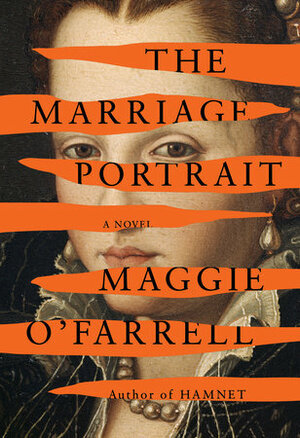
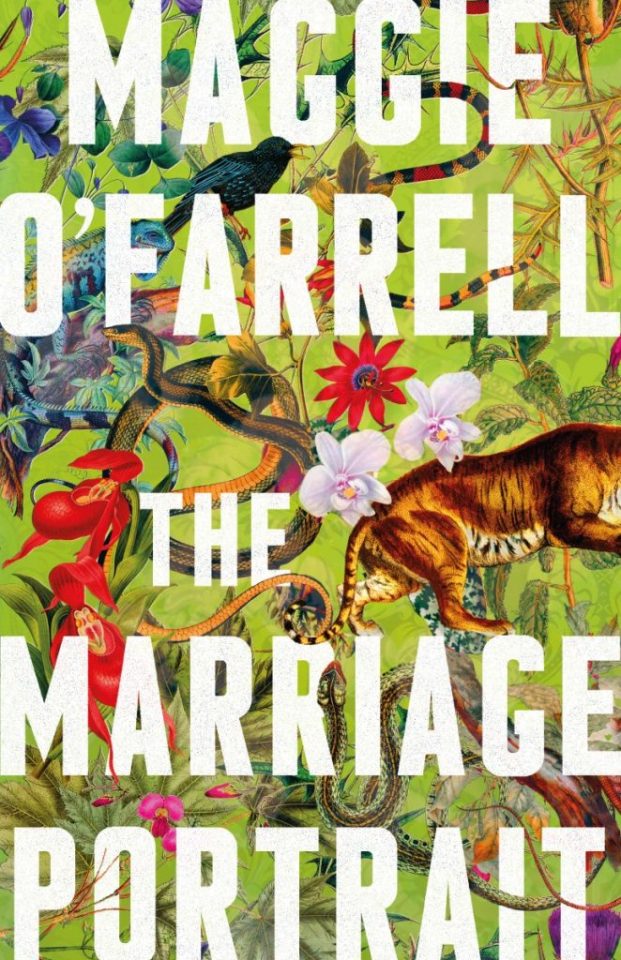
#book: the marriage portrait#author: maggie o'farrell#genre: historical fiction#genre: literary#year: 2020s
8 notes
·
View notes
Text
Lucrezia de' Medici was the apple of her father's eye. As the third daughter of the grand duke, she was content with her obscure place in the palace. She spent her days admiring the treasures, the clandestine workings and engaging in her artistic pursuits without any concern about the outside world. However, her life took an unexpected turn when her older sister unexpectedly passed away before her wedding to the regent of Ferrara, Modena and Reggio. The Duke quickly requested her hand in marriage, and her father was quick to accept on her behalf. Lucrezia, having barely left her girlhood behind, must now enter an unfamiliar court whose customs are opaque and where her arrival is not universally welcomed. Most mystifying of all is her new husband, Alfonso, who is not what he seems to be. In this historical fiction, Maggie O’Farrell weaves a story of a young woman's battle for her very survival. As Lucrezia starts to navigate through the unfamiliar court, she faces various challenges that eventually compel her to fight for autonomy. From the author of Hamnet, O’Farrell brings the world of Renaissance Italy to life in an unforgettable fictional portrait of the captivating young duchess Lucrezia de' Medici. Her writing style is so vivid and immersive, I could barely put the book down. The imagery is breathtaking and the characters are so well-crafted that readers can't help but feel invested in their fates. The novel is set in Florence, Italy, during the 1550s. O'Farrell's attention to historical detail is impressive, and she successfully transports readers to a bygone era that is rich in tradition and culture. By lacing the narrative with little threads of historical detail, she creates an immersive and authentic experience for readers. Lucrezia's character is captivating, and you can't help but root for her throughout the story. She's intelligent, ambitious, and resilient - the perfect combination of qualities for a leader. Her fight for autonomy and independence is awe-inspiring, and her journey is both emotional and empowering. In the court's eyes, Lucrezia has one duty: to provide an heir who will shore up the future of the Ferranese dynasty. Until then, for all of her rank and nobility, the new duchess's future hangs entirely in the balance. This puts immense pressure on her throughout the book, as she feels like her worth is measured solely by her ability to produce an heir. However, despite the heavy themes, the story is ultimately a riveting tale about one woman's fight for autonomy. It's a story that empowers readers to embrace their individuality and to never stop fighting for what they believe in. In conclusion, I could not put this book down. Maggie O'Farrell's writing style is so captivating that it transports readers to another world. The characters are well-crafted, the storyline is immersive, and the themes are both empowering and thought-provoking. If you're a fan of historical fiction, then this book is an absolute must-read. So, grab a copy and prepare to be transported to Renaissance Italy! Don't miss out on the thrilling experience of "insert book title here"! Get your hands on a copy now or sign up for a 30-day trial on Audible and immerse yourself in the captivating story. Don't wait, indulge in this incredible adventure today! Price: [price_with_discount] (as of [price_update_date] - Details)
0 notes
Link
"My Last Duchess" stands as a poignant dramatic monologue, a brilliant work crafted by the renowned poet Robert Browning. Through this compelling poem, ...
0 notes
Text
Under the assumption that Emilia from the Marriage Portrait is not based on a specific, known individual, I will always choose to believe that O’Farrel named her for Emilia from Shakespeare’s Othello. Especially when Lucrezia bears so many similarities to Desdemona.
Desdemona, who died at the hands of her husband; Desdemona, who was condemned for adultery she did not commit; Desdemona, who was innocent and naive to the world.
Emilia, the maid and closest friend of Desdemona; Emilia, who died at the hands of a man who had betrayed her; Emilia, who died for her love of Desdemona; Emilia, who asked to be lain in Desdemona’s bed when she died.
Lucrezia and Emilia. Desdemona and Emilia. My wonderful girls and women.
#the marriage portrait spoilers#the marriage portrait#maggie o'farrell#shakespeare#othello#Desdemona#Emilia#lucrezia d’Este#lucrezia de’Medici#alphonso d’Este#alphonso ii#duke of Ferrara#Duchess of Ferrara
0 notes
Photo


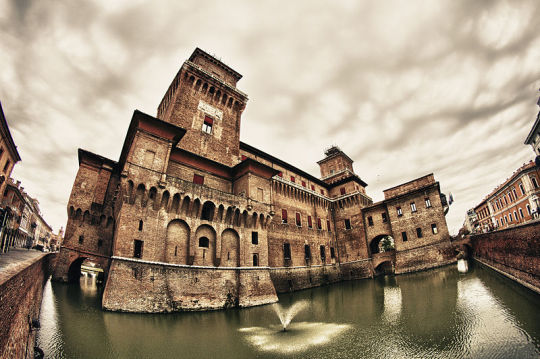
“ But a few days afterwards, while Duke Ercole was away from Ferrara, his wife was surprised by a sudden rising, the result of a deep-laid conspiracy, secretly planned by his nephew, Niccolo, a bastard son of Leonello d'Este. Niccolo's first endeavour was to seize on the person of the duchess and her young children, an attempt which almost proved successful, but was fortunately defeated by Leonora's own courage and presence of mind. The palace was already surrounded by armed men, when the alarm reached the ears of the duchess, and, springing out of bed with her infant son in her arms, followed by her two little daughters and a few faithful servants, she fled by the covered way to the Castello. Hardly had she left her room, when the conspirators rushed in and sacked the palace, killing all who tried to offer resistance. The people of Ferrara, however, were loyal to their beloved duke and duchess. After a few days of anxious suspense, Ercole returned, and soon quelled the tumult and restored order in the city. That evening he appeared on the balcony of the Castello, and publicly embraced his wife and children amid the shouts and applause of the whole city. The next day the whole ducal family went in solemn procession to the Cathedral, and there gave public thanks for their marvellous deliverance. A terrible list of cruel reprisals followed upon this rebellion, and Niccolo d'Este himself, with two hundred of his partisans, were put to death after the bloody fashion of the times. “- Julia Cartwright, Beatrice d'Este, Duchess of Milan, 1475-1497
#Leonora of Aragon#Eleanor of Naples#Eleonora d'Aragona#Ercole d'Este#Duchess of Ferrara#Duke of Ferrara#Italian history#Women in history#Men in history
8 notes
·
View notes
Text
I’ve been researching Beatrice d’Este for a week and my favorite thing I’ve discovered is that, as a second daughter and not the son her parents wanted, she wasn’t given much thought as a baby. But when she was ~2 her mother took her to visit her grandfather the King of Naples, and he absolutely loved her. Like he got so attached that he literally adopted Beatrice and she lived with him for 8 years.
#duke and duchess of Ferrara: she's fine but....not boy#Ferdinand of Naples: if anything happens to this child I will kill everyone in this room and then myself#when they were working on Beatrice's betrothal#her father wrote in a letter that since her grandad adopted her they needed his consent too#this isn't even on her wikipedia page and I have no idea why
19 notes
·
View notes
Photo
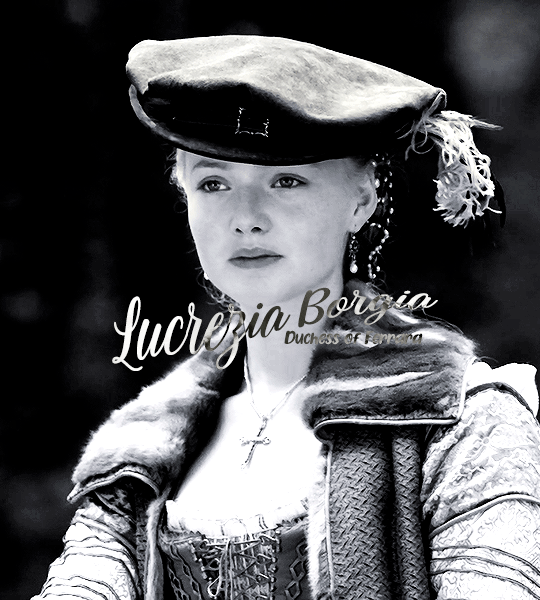

Borgia, Lucrezia, in “Dominae fortunae suae [Mrs. own Fortune]. La forza trasformatrice dell’ingegno femminile [The transforming power of female ingenuity ]":
Lucrezia, a Ferrara, diede anche prova di una compiuta maturità politica e istituzionale. Nell’agosto del 1503 era morto suo padre, Alessandro VI, e al soglio papale veniva eletto, dopo il breve pontificato di Pio III, l’acerrimo nemico dei Borgia, papa Giulio II (della Rovere). Il nuovo ordine politico portò, dopo una breve resistenza, alla riconquista pontificia della signoria romagnola di Cesare Borgia, nonostante gli aiuti militari inviati dalla sorella. Nel 1505, dopo la morte del duca Ercole I d’Este e l’incoronazione del marito Alfonso, Lucrezia divenne ufficialmente duchessa di Ferrara. In questi anni ella svolse con diligenza le mansioni che il marito le affidava sia in tempo di pace, sia durante le assenze per le campagne militari. Fu deputata dal marito alla gestione delle istanze dei cittadini presso il principe, che svolse, come riferisce un relatore contemporaneo, con “ingegno e bona gratia”.
Lucrezia, in Ferrara, also gave proof of a complete political and institutional maturity. In August 1503 his father, Alexander VI, had died and he was coming to the papal throne elected, after the brief pontificate of Pius III, the bitter enemy of the Borgias, Pope Julius II (della Rovere). The new political order led, after a short resistance, to the reconquest papal of the Romagna lordship of Cesare Borgia, despite the military aid sent from his sister. In 1505, after the death of Duke Ercole I d’Este and the coronation of husband Alfonso, Lucrezia officially became Duchess of Ferrara. In these years she she diligently carried out the duties that her husband entrusted to her both in peacetime and during absences for military campaigns. She was deputed by her husband to the management of the petitions of citizens to the prince, which he carried out, as reported by a speaker contemporary, with “ingenuity and bona gratia”. (David Salomoni)
#historyedit#perioddramaedit#lucrezia borgia#the borgias#theborgiasedit#userperioddrama#gifshistorical#userclayy#userlj#userhayf#userkristen#duchessofhastings#ours#by tha
207 notes
·
View notes
Photo

Children Of A Golden World: Elizabeth & Robert Dudleys Children In My Tudors OT3 Universe.
Anne (Nan/Nanette/Astra) Tudor-Dudley (b.1552): 3rd Duchess Of Pembroke (after her mother and maternal grandmother) and Countess of Exeter by marriage to Matthew Cecil (Son of William Cecil). Succeeded her uncle Prince George as spymaster and advisor to her cousin Turhan (Thomas II). Mother of eight children - William, Robert, Elizabeth, George, Anne, Turhan, Henry & Mihrimah.
Henry (Harry) (b. 1557): 2nd Duke of Leicester (after his father). Married to Cecily, daughter of John de Vere, 16th Earl Of Oxford. Father of three - Robert, Mihrimah & Thomas.
Thomas (Thom) (b, 1557): In charge of the Leicester estates. Married to Halime, Lady Stanley, daughter of the Earl of Stanley and Rabia, Countess of Stanley and father to four daughters - Elizabeth, Maryam, Soraya and Philippa.
Robert (Robbie) (b. 1559): Lord High Admiral. Envoy to his cousin Maryam’s court in Persia. Travel writer. Father of one daughter Parisa by Tahmina, the daughter of a Persian Merchant with whom he lived with in Persia.
Mary (Marian/Marie) (b. 1580 - d. 1680): Duchess of Ferrara by her first marriage and Countess of Surrey by her second. Lived through the the English Civil War and the restoration and thus the execution of her several times great nephew King Arthur Jahan and the return of the monarchy under Queen Charlotte Askala. She sheltered many refugees (particularly Jewish families) under the Restorationist Regime and smuggled out many using her contacts in Italy. Mother of six children (four by her first husband Alfonso The Duke of Ferrera - Francesco, Giovanni, Contessina & Lorenzo and two by her second husband Turhan (Earl Of Surrey) - twins Turhan & Mihrimah.
#history au#historical au#tudorsedit#ot3: political power trio#tudors ot3 verse reference#children of a golden world#pending graphic tag#alternate history#i wanted to do another version of this because I have more details
35 notes
·
View notes
Text
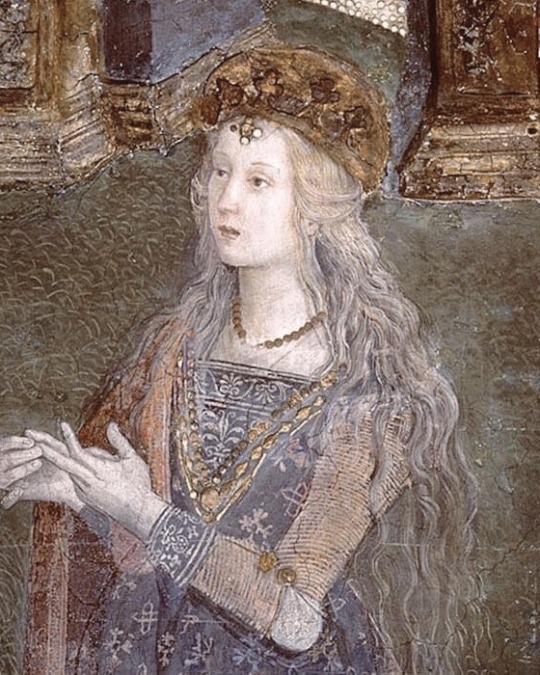

Lucrezia Borgia duchess consort of Ferrara, Governor of Spoleto (1480 – 1519):
Illegitimate daughter of Rodrigo Borgia, later Pope Alexander VI, and his mistress Vannozza Cattanei.
Married (I) 1493, Giovanni Sforza, lord of Pesaro, (2) 1498, Alfonso d’Aragona, Duke of Bisceglie, (3) 1501, Alfonso d’Este, later Duke of Ferrara.
“As Duchess of Ferrara, Lucrezia was required to be both splendid and domestic, playing a multitude of roles – Governor of the state, leader of a brilliant court, hostess, mother and wife.”
Lucrezia Borgia: Life, Love, and Death in Renaissance Italy by Sarah Bradford.
#lucrezia borgia#history#women in history#italian renaissance#15th century#16th century#women of the italian renaissance#art#the borgias
161 notes
·
View notes
Photo








AU: Where all the children of Henry VII and Elizabeth of York live to adulthood.
1. Arthur II, King of England (tenure: 1509-1550). Married to Katherine of Aragon. Father of Henry VIII, King of England; Edward, Duke of York; Elizabeth, Queen of Spain; Mary, Archduchess of Austria; Isabella, Queen of France.
2. Margaret, Queen of Scots. Married to James IV, King of Scotland. Mother of Arthur I, King of Scotland; Henry, duke of Rothesay; Elizabeth, duchess of York.
3. Henry, Duke of York. Married to Margaret of Austria. Father of Elizabeth, marchioness of Pembroke; Mary, duchess of Rothesay; Henry, duke of York.
4. Elizabeth, Queen of France. Married to François I, King of France. Mother of Henri II, King of France; Louise, Queen of Navarre; Élisabeth, Queen of Portugal; Marguerite, Duchess of Ângouleme; Charles, duke of Valois.
5. Mary, Holy Roman Empress and Queen of Spain. Married to Charles V. Mother of Philip II, King of Spain; Charles VI, Holy Roman Emperor; Enrique, King of Sicily; Elizabeth, Duchess of Ferrara; Juana, Archduchess of Austria.
6. Edmund, Duke of Somerset. Married to Lucrezia D’Este. Father of Henry, duke of Somerset; Edmund, earl of Worcester; Owen, earl of Richmond; Lucrezia, duchess of Northumberland; Margaret, duchess of York; Eleonor, countess of Westmorland.
7. Katherine, Queen of Navarre. Married Henri II of Navarre. Mother of Henri III of Navarre; Marie, viscountess of Rohan; Jeanne, duchess of Savoy.
#i do NOT claim to own any of those gifs#found them online with the ONLY purpose to play with history#if however any of these gifs belong to anyone please let me know so I can credit them properly#tudor dynasty#tudor edit#henry vii#elizabeth of york#Prince Arthur Tudor of Wales#arthur tudor#henry duke of york#margaret tudor#elizabeth tudor#mary tudor#edmund tudor#katherine tudor
49 notes
·
View notes